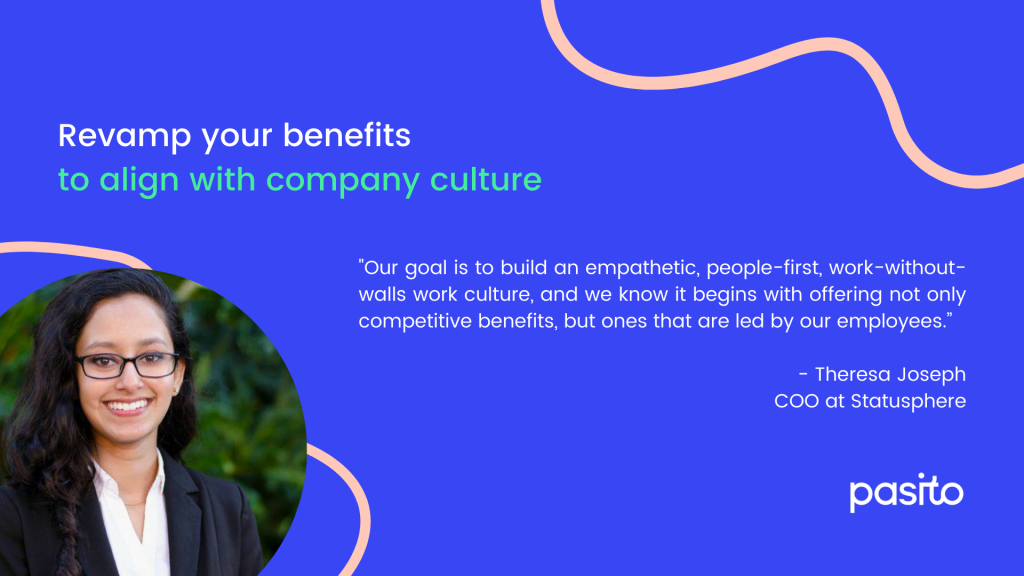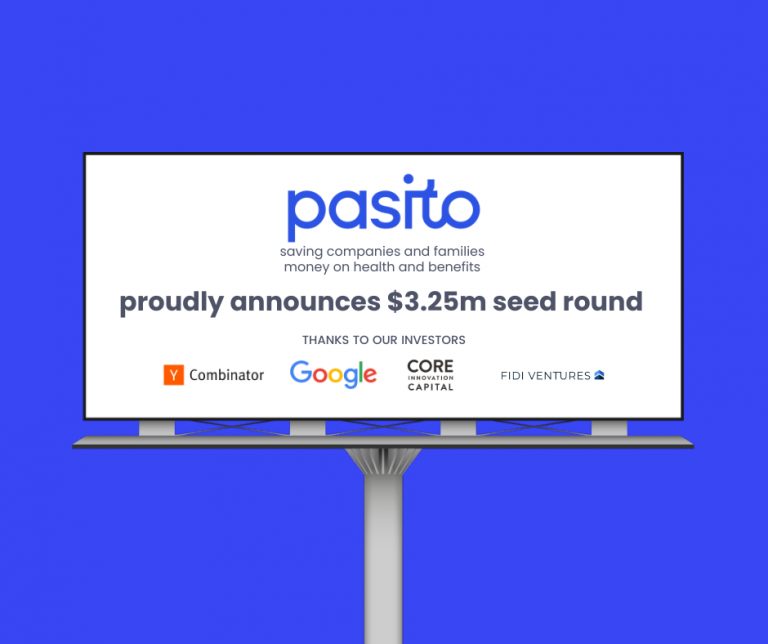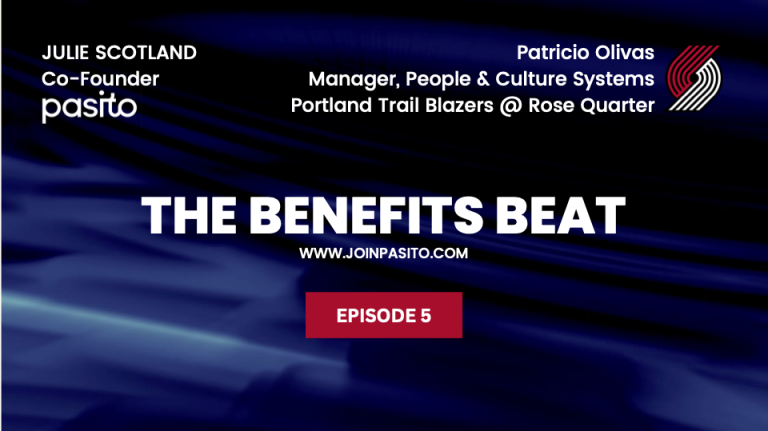Tired of hearing about the Great Resignation? While it quickly became a buzzword and the talk of the new year, many people don’t realize it didn’t start with the pandemic.
In part, it started with people reshuffling into roles that were more suited to their needs and wants (read: better benefits and compensation packages).
Almost half of workers who quit a job in 2021 did so because they didn’t have flexibility to choose when they put in their hours, and roughly the same number of workers said it was because they didn’t have good benefits such as health insurance and paid time off.
Which begs the questions… Have you stopped to consider how your current benefits package could be hurting your company? More importantly, when was the last time you updated it?
It could be time for a revamp. Here’s how to tell.
It’s time to modernize your benefits plan when…
*Drum roll please*
1. There are company or industry-wide changes
COVID-19, anyone?
Yes, the pandemic pushed us headfirst into remote work, causing companies to adapt or be left behind. But that isn’t the only reason to modernize your current benefits package.
According to Michael Alexis, CEO and owner of teambuilding.com, “one of the strongest catalysts for revamping a benefits package is when there has been a substantial change in roles across the company or your industry.”
His company just went through this.
“With the pandemic, our team became fully remote, and so we updated our benefits and perks for that audience. Updates included adding a monthly stipend to cover WiFi, cash for home office improvements, and more flexible health benefits that could be used in any location. This updated package addressed the new needs for our employees, as well as ways we could take care of them better.”

And it doesn’t end there. Revamping benefits is a continual process, even if you go back to the office.
“If your company is shifting from remote to in-person or hybrid, it’s another opportunity to review benefits. Similarly, if you moved the office to a new location, substantially repositioned the products or services of the company, or hired a large number of people in a new demographic, then it’s time to revisit your benefits. As a general rule, we review benefits every year in January, which is a good proxy if you don’t see other obvious reasons to do so throughout the year.”
But before we get ahead of ourselves, let’s move onto the next point that Alexis briefly touched on.
2. Your employee demographics shift
You’re hiring younger employees. An increasing number of your workers are minority or foreign-born. You have an increasing number of growing or new families on your team, or even those who have gaps in their resumes after taking some time off.
Long story short, your workforce isn’t standard. So why offer them all the standard benefits?
Paid vacation and sick time, retirement accounts, and health insurance will no longer cut it. If you want to stay competitive, you need to provide a better employee benefits experience, which includes adjusting benefits according to demographics.
Want to recruit those who are returning to work after a gap in their career? Offer flexible schedules. Or maybe you have aspiring parents on your team? Offer adoption or fertility support as a benefit.
These tailored benefits not only encourage employee retention, but also give you a leg up on talent acquisition.
3. Employee satisfaction with current benefits is low
If you’re not getting direct feedback from your employees regarding your current benefits, ask yourself the following three questions to give yourself the answer you need:
- Am I getting questions about our benefits?
- Are people complaining about them?
- Is there high utilization?
The fact that 63% of Americans are confused about 401(k) retirement plans says a lot about our current benefits education system, at least when it comes to pre-tax accounts.

And if asking yourself those questions isn’t enough, run a survey to test the waters and see where there’s friction with your current benefits and compensation package and what can be improved.
4. Your benefits package has low utilization
Utilization can be a simple or nuanced metric, depending on how it’s reported.
You can look simply at the number of employees using a product or service during a time period. Or, when it comes to financial benefits like pre-tax accounts, utilization should also mean contribution levels by income bracket and withdrawals from your employees.
Measuring benefits utilization is also a key part of meeting yearly compliance requirements, passing non-discrimination tests, and gauging the impact of your Diversity, Equity, and Inclusion (DEI) initiatives.
Ultimately, this metric helps you identify which benefits are worth it, and which you may need to reverse come year end. But utilization alone also doesn’t guarantee maximization, or helping employees get the most out of their benefits packages.
For example, just because employees signed up for your company-provided 401(k) does not mean that they’re getting the most out of their retirement account. A promising way to maximize their account is by helping employees see the personal tax implications of their contributions. Following standard 401(k) investment advice leaves money on the table.
Tracking utilization alone can also give you a false positive (or negative).
Take Dependent Care Flexible Spending Accounts (DCFSAs) for example. The benefit can provide thousands of dollars in savings for those who take advantage of it, and it can be a lifeline for parents and caregivers in the workplace. However, if your caregiving employees only contribute $50 to their DCFSA, they’ll see minimal relief on care expenses despite your high utilization rates.
While there are some caveats, by tracking utilization you can get a high-level read of a benefit’s popularity and also better understand which benefits need a little more hand-holding when it comes to enrollment efforts.
5. You fail a non-discrimination test
You fail your mid-year non-discrimination test – or worse, your year-end one. Now you have to adjust contributions for the employees that fully understand what that means for their tax bill. (Yikes!)
And not only does it involve the emotional and mental strain of possible backlash from C-suite executives, but you also run the risk of ticking off your highly compensated employees.
But don’t worry. You can turn things around for the better, and it happens by helping your team take full advantage of your current benefits program.
6. Your current benefits package doesn’t align with company culture
Making sure your benefits reflect company culture starts with asking those at the core of it all—your employees.
“We knew in order to improve our benefits package, we needed to go right to the source for feedback—our teammates,” said Theresa Joseph, COO at Statusphere, a consumer-to-consumer MarTech platform. “By asking employees directly, we knew 100% that the programs we launched were in-line with their wants/needs.”
Joseph continued to mention that they’ve received “lots of positive feedback” from their team about the changes, which is how they know they’re on the right path.
“Our goal is to build an empathetic, people-first, work-without-walls work culture, and we know it begins with offering not only competitive benefits, but ones that are led by our employees.”

And speaking of your employees, have you talked to them as of late? It might be time…
7. Your employees tell you they need better benefits
Modernizing your benefits package doesn’t have to be difficult. Approach the process with an open mind, and let your team come forward for their thoughts.
This is exactly what Isabella Chiu, Chief of Staff at Testbox, does.
“At TestBox, we take employee feedback very seriously. Whenever we explore a potential change in our employee benefits, it’s prefaced with direct feedback from employees on what’s beneficial to them and what’s potentially missing.”
Chiu shared with us that the most recent benefit her company changed was their monthly snack budget.
“Beyond competitive compensation and full health and mental benefits, we wanted to offer our team something that would give them more time back in their day.”
So, they opened up the floor to the company to get a feel for what their globally distributed team would value.
“We landed on a monthly food budget that the team could use up each month versus complicating things through a service that wasn’t easily available to everyone. We also landed on the idea of donating the remainder of each person’s budget to a new charity each month.”
While Chiu admits the initiative is still in its early days, they’ve seen an “uptick in people using this benefit, and Slack channels are more active with people sharing new meals they’re trying!”
8. Your employees are struggling financially

Sixty-three percent of employees say their financial stress has increased since the start of the pandemic, and finances are the top cause of employee stress.
To say a lot of U.S. employees are struggling financially is an understatement.
Luckily, there are an abundance of employee financial wellness benefits, such as tuition or student loan repayment, dependent care flexible spending accounts (DCFSAs), Health Savings Accounts (HSAs), financial coaching sessions, and more.
You can also provide your employees with personalized benefits guidance, which Pasito’s CEO and Co-founder Pauline Roteta weighed in on.
“By delivering personalized guidance to employees on everything from health plan selection to tax planning, employees make better use of their total rewards (salary, benefits, equity). Doing this equates to thousands of savings annually, effectively giving them an increase in net take-home pay—without the employer increasing payroll budget!”
It’s a win-win for all.
When in doubt, go straight to the source (and track your benefits’ success)
Getting employee feedback was a common theme in our featured experts’ quotes. And for good reason!
If you’re unsure if it’s time for you to revamp your employees’ benefits, go straight to the source. Survey your employees to see what they think about your current benefits package. Adjust from there.
And to keep even closer tabs on your benefits year-round, measure their success. (We just so happen to have a guide available to help you do that.)
Do so by using:
- Hard and soft metrics to measure employees benefits success
- Employee-centric ways to show the personalized value of your benefits to maximize ROI
- Timely tips to increase adoption of benefits across your organization
Because at the end of the day, benefits need to evolve with the people they’re meant to serve. Keep this in mind, and no Great Reshuffle will ever quake your team.








